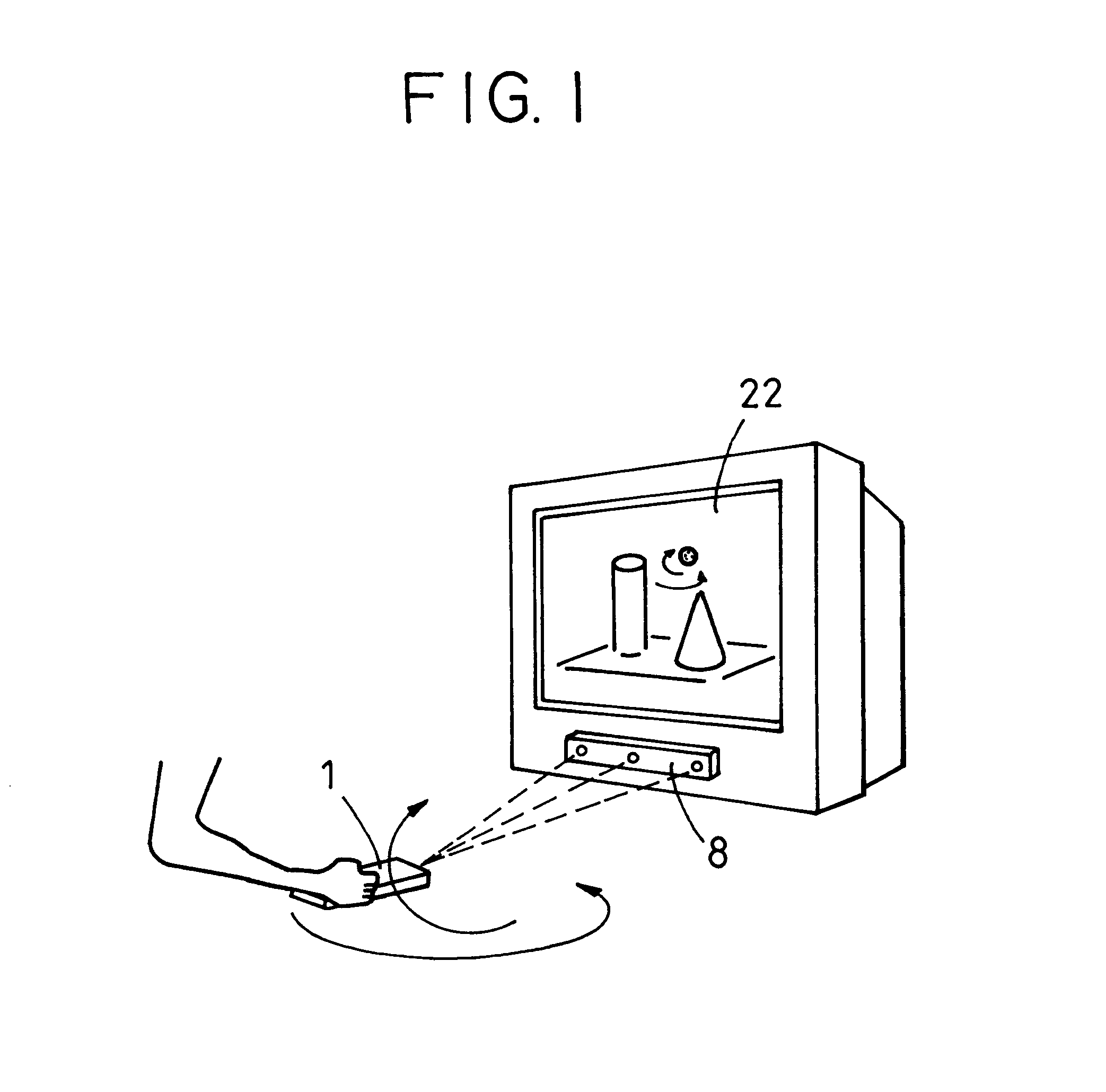Photodetector, photosensing position detector, coordinate input device, coordinate input/output apparatus, and photodetection method
a technology of photodetector and detector, which is applied in the direction of counting objects on conveyors, static indicating devices, instruments, etc., can solve the problems of narrow dynamic range of devices, virtually unavailable tracking means for tracking variations in an amount of light, and inability to detect the effect of light intensity
- Summary
- Abstract
- Description
- Claims
- Application Information
AI Technical Summary
Benefits of technology
Problems solved by technology
Method used
Image
Examples
first embodiment
As already discussed, the present invention is directed to a method for expanding dynamic range to the strength of incident light. A first example of the method for expanding dynamic range will now be discussed.
A timing sequence in the first example is shown in FIG. 18 and FIG. 19.
In the first example of the first embodiment, the external control of the ring CCD and the synchronization between the ring CCD and the LED blinking remain largely the same as those in the known devices. The difference is that a storage quantity per blinking cycle is reduced by deviating the signal "IRCLK" of the electronic shutter from the signal "LED_IR" (or "IR") in phase by a predetermined amount at the beginning of one coordinate sampling, and that the signal "IRCLK" and the signal "LED IR" (or "IR") are aligned in phase immediately prior to the end of the one coordinate sampling by slightly deviating the signal "IRCLK" from the signal "LED_IR" (or "IR") in frequency.
Specifically, the timing sequence ...
second embodiment
FIG. 25 is a perspective view showing a coordinate input device in accordance with a second embodiment of the present invention. FIG. 26 is a block diagram of the coordinate input device.
The coordinate input device includes a pointer 101 which forms a light spot 103 on a screen 102 serving as a coordinate input surface, a photosensor unit 127 which detects position coordinates of the light spot 103 generated on the screen 102, and a signal processor 124 which controls the photosensor unit 127 and calculates coordinate information from a signal into which the light spot 103 is photoelectrically converted by the photosensor unit 127.
FIG. 27 shows a projection-type display apparatus 109 which presents an image on the screen 102 while echoing back coordinate position information (of a cursor and a path, for example) indicated by the pointer 101.
The pointer 101 includes a light emitter element 115 such as a semiconductor laser or an LED for directing an optical beam, a blinking signal ge...
PUM
 Login to View More
Login to View More Abstract
Description
Claims
Application Information
 Login to View More
Login to View More - R&D
- Intellectual Property
- Life Sciences
- Materials
- Tech Scout
- Unparalleled Data Quality
- Higher Quality Content
- 60% Fewer Hallucinations
Browse by: Latest US Patents, China's latest patents, Technical Efficacy Thesaurus, Application Domain, Technology Topic, Popular Technical Reports.
© 2025 PatSnap. All rights reserved.Legal|Privacy policy|Modern Slavery Act Transparency Statement|Sitemap|About US| Contact US: help@patsnap.com



